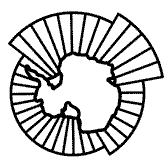Convention for the Conservation of Antarctic Marine Living Resources

Logo of the Commission for the Conservation of Antarctic Marine Living Resources
|
|
| Abbreviation | CCAMLR |
|---|---|
| Formation | 20 May 1980 |
| Type | International organization |
| Purpose | Environment |
| Headquarters | Hobart, Australia |
| Coordinates | 42°53′12″S 147°19′28″E / 42.8866992°S 147.3243362°ECoordinates: 42°53′12″S 147°19′28″E / 42.8866992°S 147.3243362°E |
|
Area served
|
Antarctic |
|
Membership
|
24 Member States + 11 Acceding States |
|
Executive Secretary
|
Andrew Wright |
| Website | www |
The Convention on the Conservation of Antarctic Marine Living Resources, also Commission for the Conservation of Antarctic Marine Living Resources, and CCAMLR, is part of the Antarctic Treaty System. The Convention was opened for signature on 1 August 1980 and entered into force on 7 April 1982 by the Commission for the Conservation of Antarctic Marine Living Resources, headquartered in Tasmania, Australia. The goal is to preserve marine life and environmental integrity in and near Antarctica.
It was established in large part to concerns that an increase in krill catches in the Southern Ocean could have a serious impact on populations of other marine life which are dependent upon krill for food.
In 1989, CCAMLR set up the Ecosystem Monitoring Program (CEMP) to further monitor the effects of fishing and harvesting of species in the area.
In July 2013, the CCAMLR held a meeting in Bremerhaven in Germany, to decide whether to turn the Ross Sea into an MPA (Marine Protected Area). The deal failed due to Russia voting against it, citing uncertainty about whether the commission had the authority to establish a marine protected area.
On the 28th October 2016 at its annual meeting in Hobart, a Ross Sea marine park was finally declared by the CCAMLR, under an agreement signed by 24 countries and the European Union. It protects over 1.5 million square kilometres of sea, and is the world's largest.
...
Wikipedia
